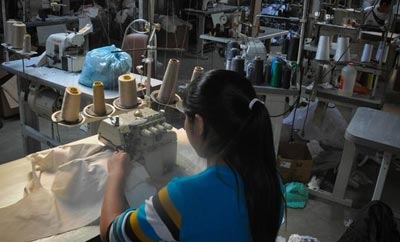Authorities in Brazil have rescued 17 Peruvians from slave-like conditions in a textile workshop in São Paulo, leading officials to warn Peru may become the country’s next major source of forced labor.
The authorities were alerted to the situation after two of the workers escaped. While one of them was recaptured, the other reported the workshop owner to the Peruvian consulate, reported O Globo.
A site inspection revealed the workers — among them minors — were working 17-hour days stitching clothes for a local fashion chain.
The Peruvians were mainly young adults recruited from the towns of Arequipa, Cuzco and Puno with promises of well-paid jobs. On arrival, the workers found themselves locked into debt bondage as they were told they had to pay back the costs of their travel.
While some workers later began to earn a small wage — about $10 a week — the workshop owners still retained their identity documents, kept them under surveillance and restricted their movements.
The Peruvian owner of the workshop has been arrested, reported EBC.
InSight Crime Analysis
In recent years, Brazil has earned a reputation as a hub of “slave labor,” which Brazilian law defines as “forced labor or labor performed during exhausting work days or in degrading working conditions.” According to the Walk Free Foundation’s Global Slavery Index, as many as 220,000 people work in such conditions in the country.
The majority of these workers are Brazilian nationals, who are recruited to work in rural areas in sectors such as cattle ranching, mining and logging or in construction and the service sector in urban areas.
However, foreigners are also imported, especially, as in this case, to work in garment factories and textile sweatshops in and around São Paulo. According to the US State Department (pdf), commonly trafficked nationalities include Bolivians, Paraguayans, Peruvians and Chinese.
SEE ALSO: Coverage of Slavery
According to the superintendent of the São Paulo Ministry of Labor, Luiz Antonio de Medeiros, Bolivia is currently the primary source country for such forced labor, but there are signs indicating Peru may soon become a major recruitment center for human trafficking to Brazil.
Medeiros offered as evidence a 21 percent leap in Peruvian workers migrating to São Paulo in 2013. As more Peruvians look to escape poverty in their home country, the pool of people potentially vulnerable to the empty promises of recruiters is growing.

